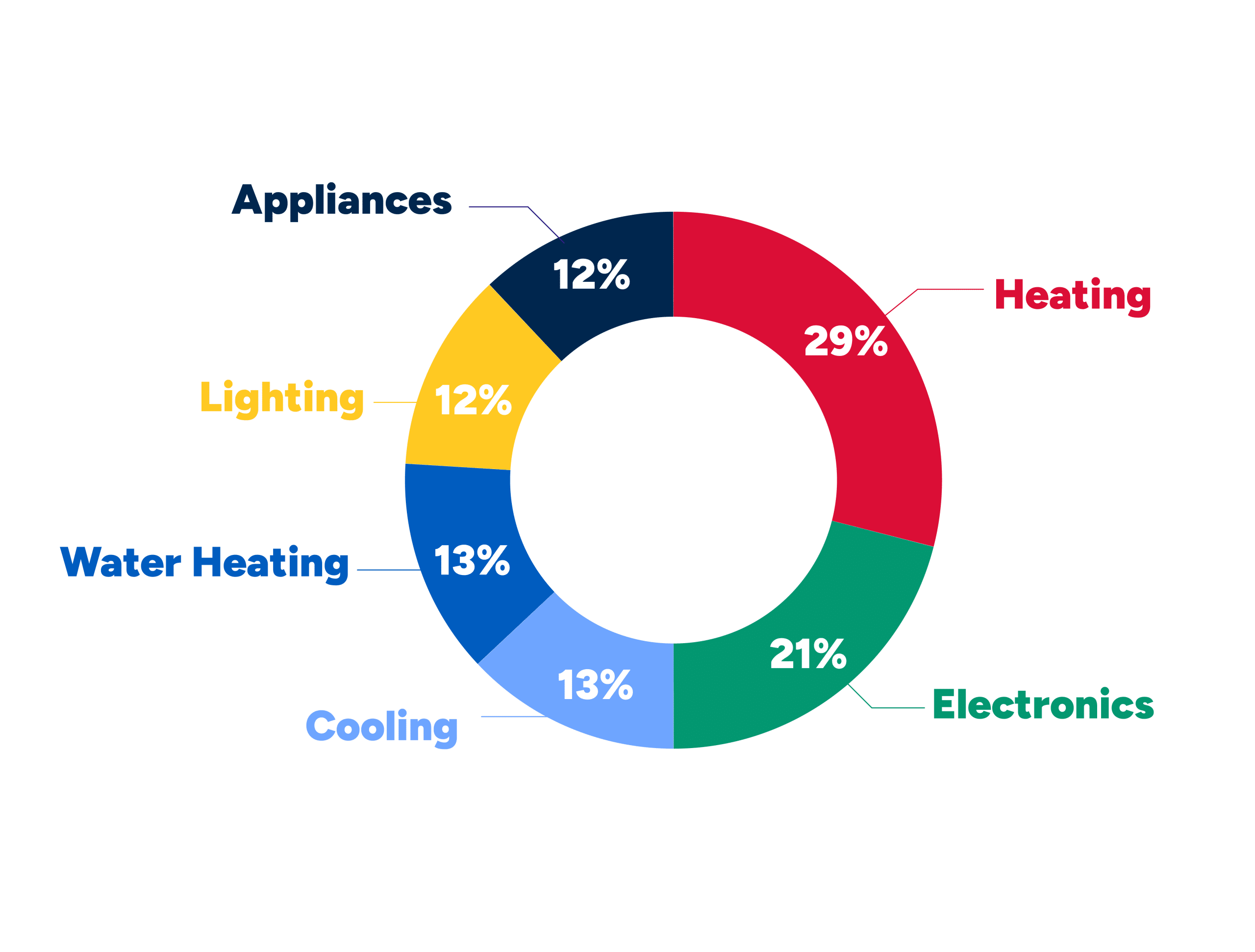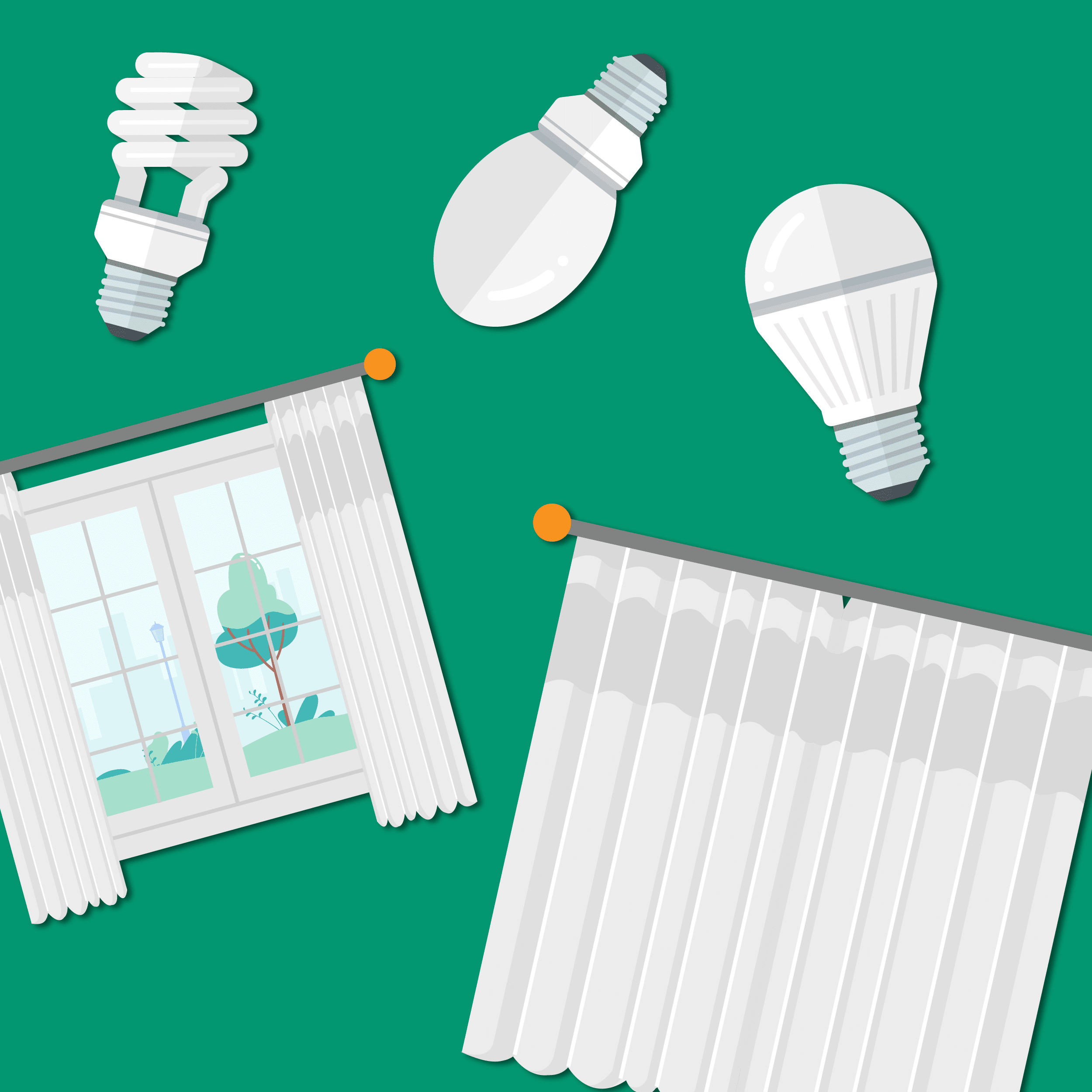Electric

Energy Savings
How Energy Is Used In Our Homes
For most Michiganders, most energy costs come from heating and cooling your home, but big appliances, miscellaneous electronics, lighting, and water heaters are major contributors as well.

Calculating Operating Costs
A Watt is the standard unit of measurement of electricity, and a kilowatt-hour — 1,000 watts used in one hour — is a baseline measure of electricity consumption.
You can estimate the cost of operating any appliance in your home with this simple formula:
So here’s how you’d calculate a 50-watt laptop operated for 300 hours in a month:
Then multiply the kWh by ZBPW’s average rate, and you have the cost of operating that laptop for a month.

Follow along on Facebook and Instagram for more tips and information!
Energy-Saving Tips Around Your Home
Avoid Phantom Power
Many appliances continue to draw power when they are switched “off.” These “phantom loads” usually happen with appliances containing digital clocks, such as DVRs, TVs, computers and kitchen appliances. You can unlock savings when you unplug appliances that aren’t used regularly or look into smart power strips (be sure to check out the rebate applicable options at mienergysmart.com).
Lighting
Lighting accounts for about 12% of the average home’s energy use. By switching to LED bulbs in the most frequently used lamps or lights in your home, you can save over $75 annually! Additional lighting tips:
- In the summer, use shades and curtains to block out the sun when you’re out of the house to avoid heating up rooms (then the opposite in the winter, take advantage of the sun when it’s out in Janaury!)
- Turn off lights in unoccupied rooms.
- Keep your light bulbs clean & free from dust.
Choose Energy Efficient Products
Choosing energy-efficient equipment can reduce your energy usage, costs and carbon footprint. The reduction of your energy loads — the power needed to serve you at any given time — helps spread out the energy to be maintained by Zeeland BPW.
ENERGY STAR® appliances can save you 15%–40% on operating costs. Two refrigerators may have the same capacity and features, but an ENERGY STAR® refrigerator can save you 20% on your operating costs!
Water Heating
Long steamy showers can affect your water bill as well as your energy bill. Keep both lower with these tips:
- Limit your major water heating tasks by taking short showers or shallow baths.
- When possible, use cold water settings on your dishwasher or washing machine.
- Buy a high-efficiency washing machine when you need a new washer.
- Regularly check your water heater for possible leaks.
- If you have an older water heater, consider wrapping it with an insulation jacket to decrease its heat loss. Insulating the water pipes also can help.
- Don’t leave hot water running when shaving, brushing your teeth, or rinsing dishes.
- Wait to run your dishwasher and washing machine until you have a full load.
- Install a low-flow showerhead or faucet aerator to not only save water, but reduce water heating costs.
- Consider a tankless water heater system. Tankless units heat water directly, without the use of a storage tank — saving energy and water, reducing both of your utility bills.
Home Heating & Cooling
Tackle the item using up the most energy in your home: your heating & cooling, with these tips:
- During the cold season, set your thermostat between 68-70° when you’re home. During those warm months, shoot for closer to 76-78°.
- Avoid setting your thermostat colder than normal when you do turn on your air conditioner. It will not cool your home down any faster and it wastes energy.
- During hot months, limit your use of bathroom and kitchen vent fans as they pull in hot outside air, making your AC work harder.
- Use a programmable thermostat. Set it at a less power-inducing temperature while you’re away. Program it to be at a comfortable temperature when you return (be sure to check out the rebate-applicable options at mienergysmart.com).
- Check your air filter every month and be sure to replace it when it’s dirty. This will increase airflow and will keep your furnace from running unnecessarily hard.
- If possible, have your HVAC inspected and cleaned twice a year by a licensed professional.
- Repair leaks in your air duct system as soon as possible.
- Check the sealing on your windows and add caulk around your window frames and window stripping around doors.
- Use ceiling fans or portable fans to circulate air. Make sure ceiling fans are running in a clockwise direction during the winter. Don’t forget to turn off fans when you leave the room!
- Replace old windows with ENERGY STAR® windows. This may cut your energy bill as much as 15 percent.
- Install inexpensive foam gaskets behind the face plates of all electric sockets and light switches.